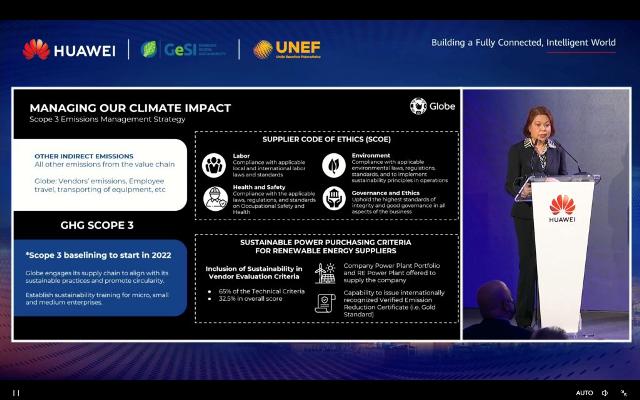Globe Telecom is making investment in building a green and low-carbon optical network, assisting the mobile network operator in achieving Net Zero Greenhouse Gas emissions by 2050.

The company is operationalizing its green network with the help of China-based Huawei Technologies to save on space and power consumption.
“Our number one baseline strategy is simplification. The more you simplify the network, the less footprint you’ll have. In turn, there will be less maintenance cost and less power needed,” Globe Chief Sustainability Officer and SVP Group Corporate Communications Officer Yoly Crisanto said.
The low-carbon optical access network includes the deployment of Blade Optical Line Terminal (OLT) for various outdoor wireless site types, which provides 50 percent reduction in power consumption and natural heat dissipation.
An Intelligent Optical Network Terminal (ONT) utilizes an Intelligent Application Performance Management (APM) that detects device usage for energy management for up to 30 percent power savings.
For the transport network, the deployment of Access DWDM simplifies deployment from traditional equipment rooms to outdoor cabinets for a 60 percent and 40 percent reduction in space and power requirements, respectively.
The reduction of size enables management of limited space and power requirements resulting in faster rollouts. Similarly, the Optical Cross Connect (OXC) reduces six cabinets and more than 700 fibers into one device, saving 80 percent of space and 70 percent of the power needed.
Globe is committed to reducing its GHG emissions by 50 percent in 2030 and achieving Net Zero GHG Emissions by 2050 as part of its support for the global Race to Zero campaign. Globe has partnered with AON UK, DNV-Synergi Life, and South Pole to help it implement the Climate Action Roadmap.
Globe has deployed over 7,400 green network solutions such as fuel cell systems, direct current-hybrid generators, free cooling systems, and lithium-ion batteries that use cleaner fuel and are energy-efficient, resulting in lower emissions. The company has shifted 14 of its high-energy utilization facilities to renewable energy.





